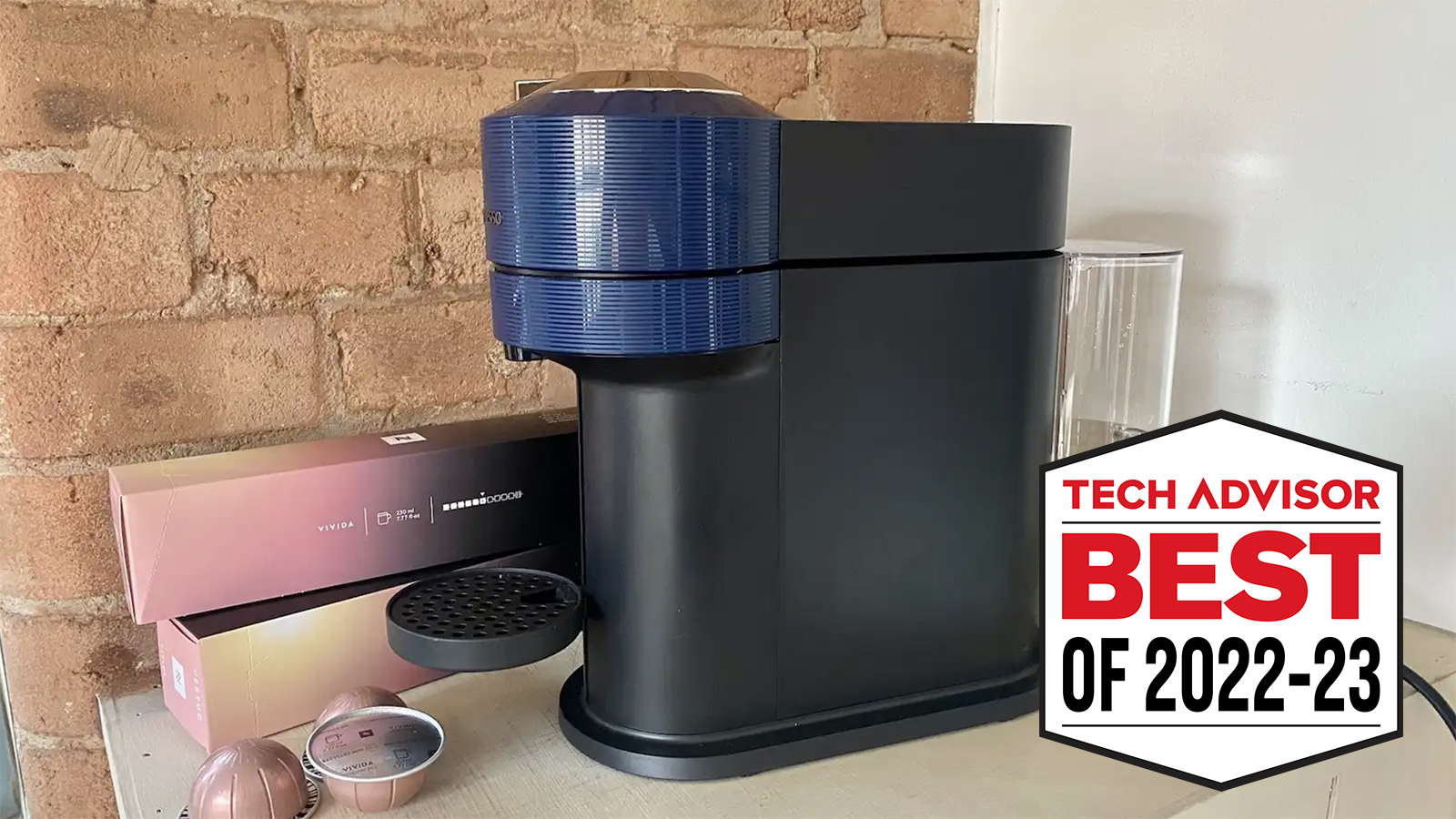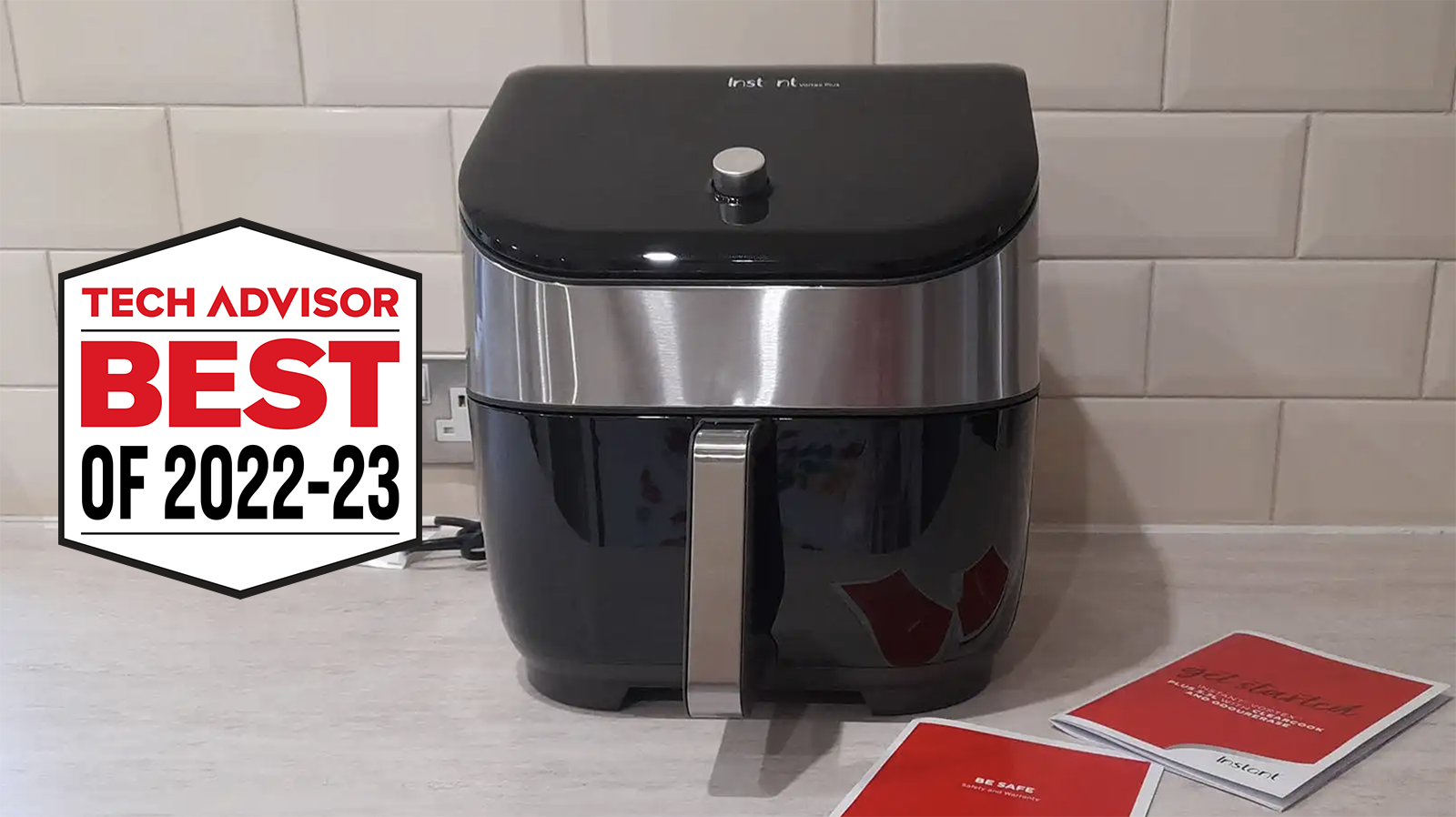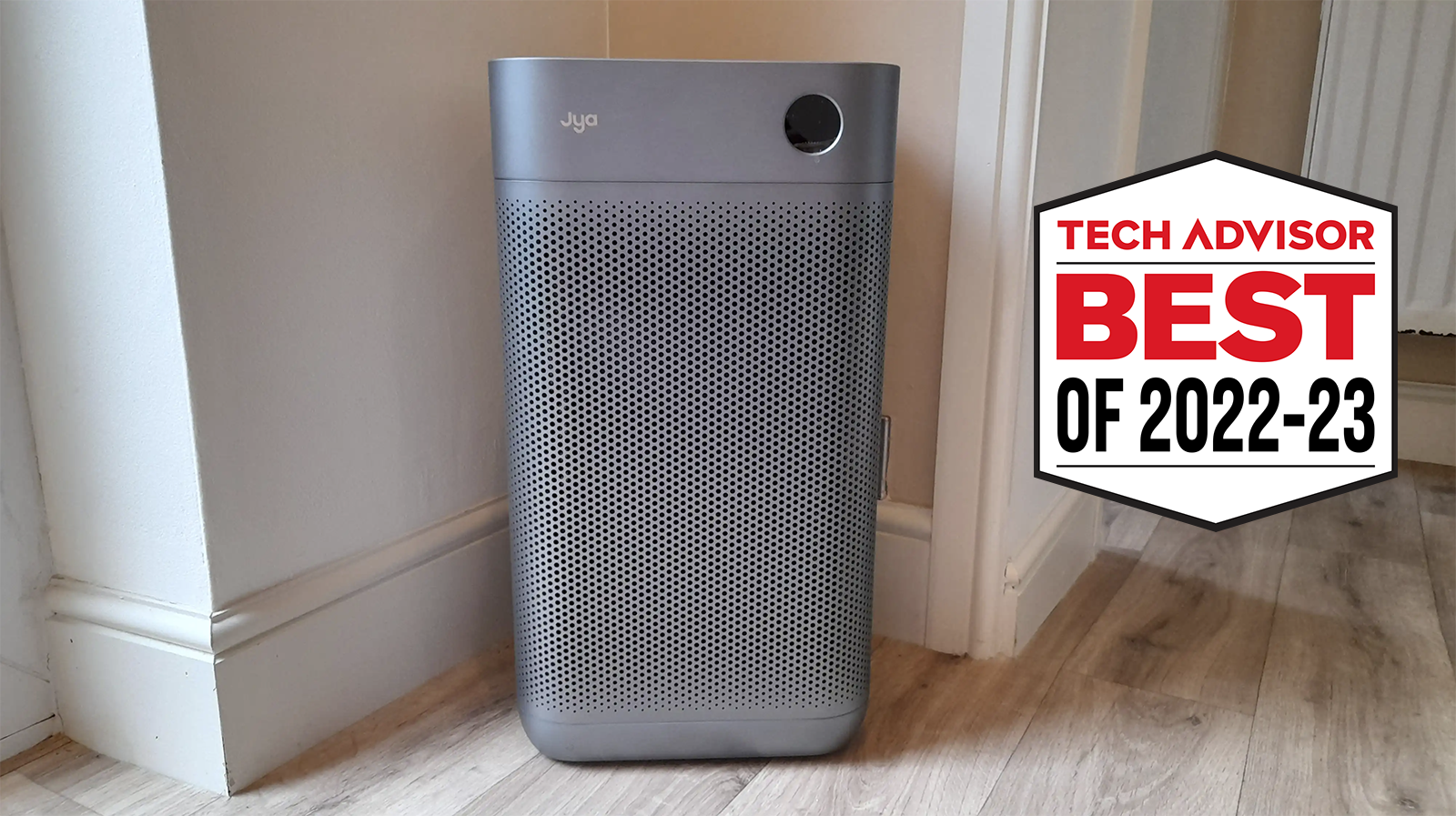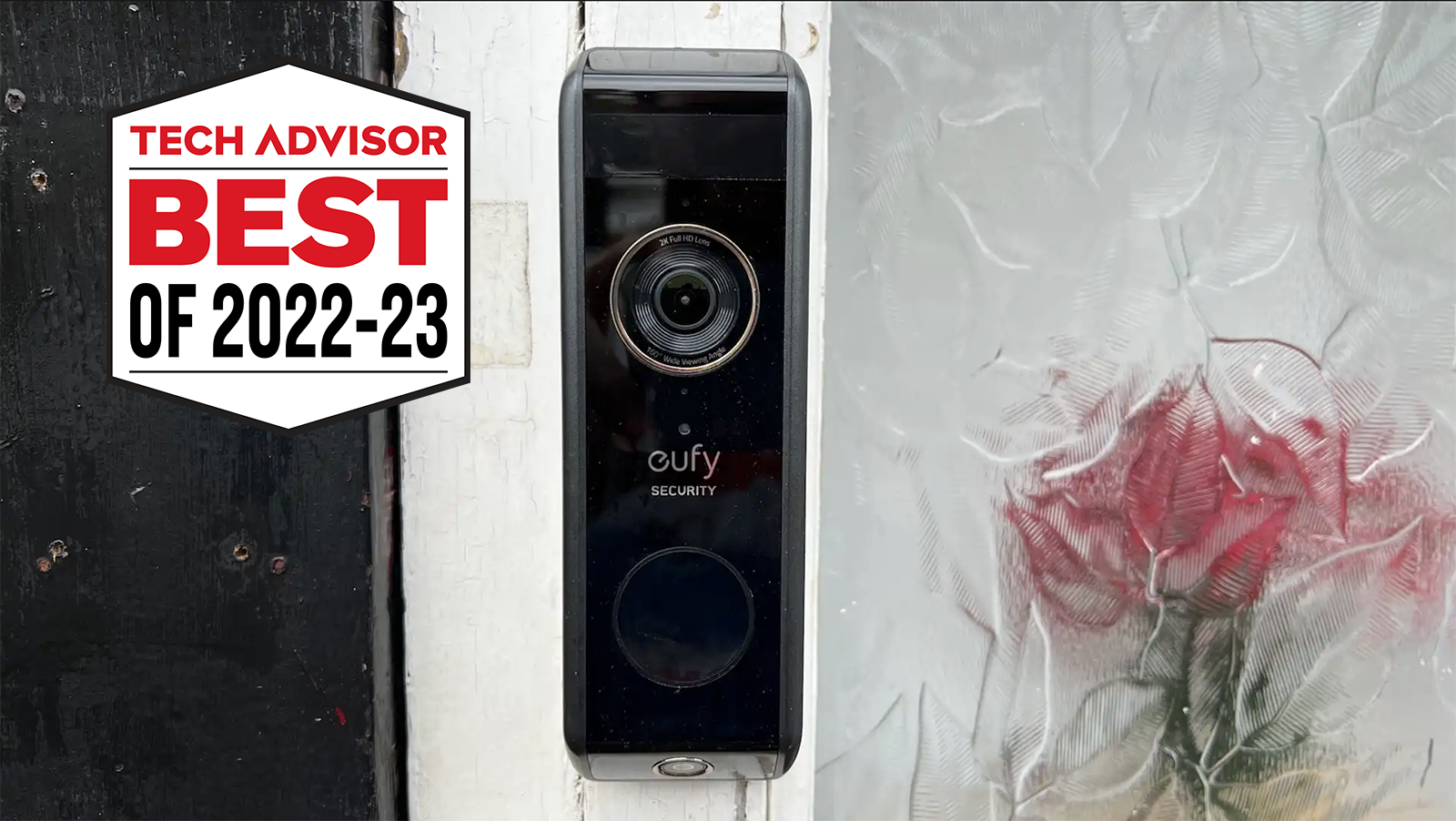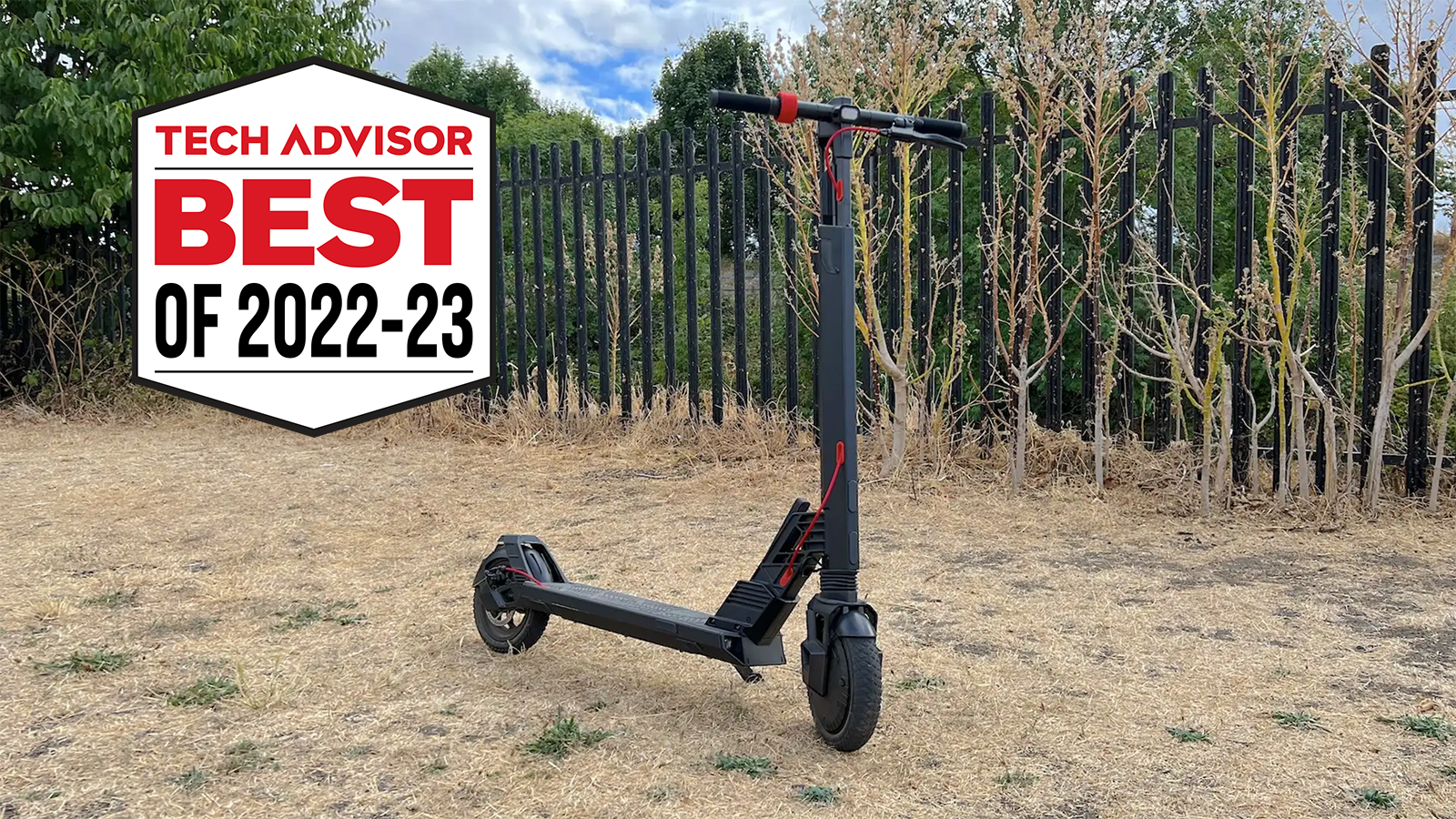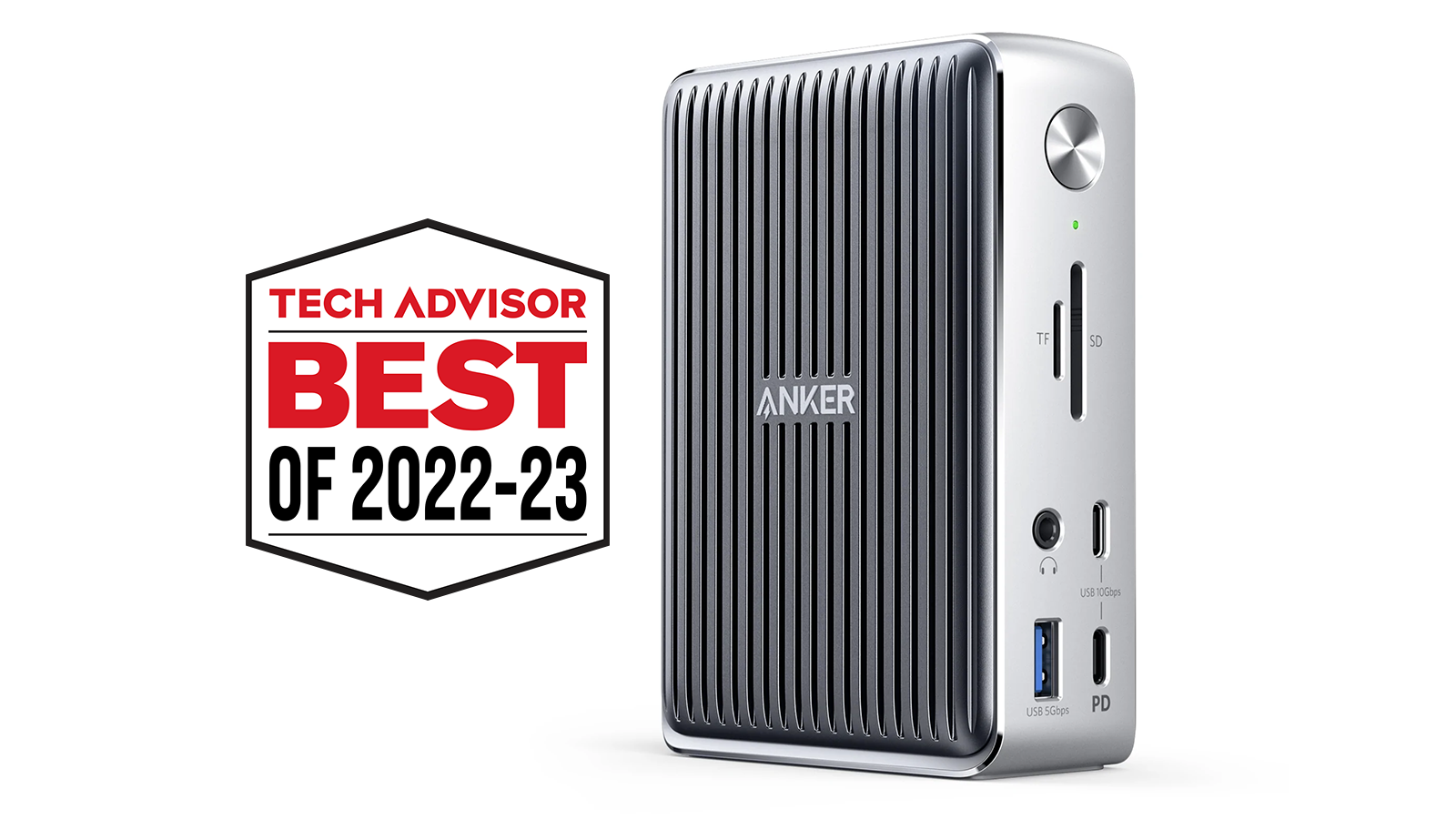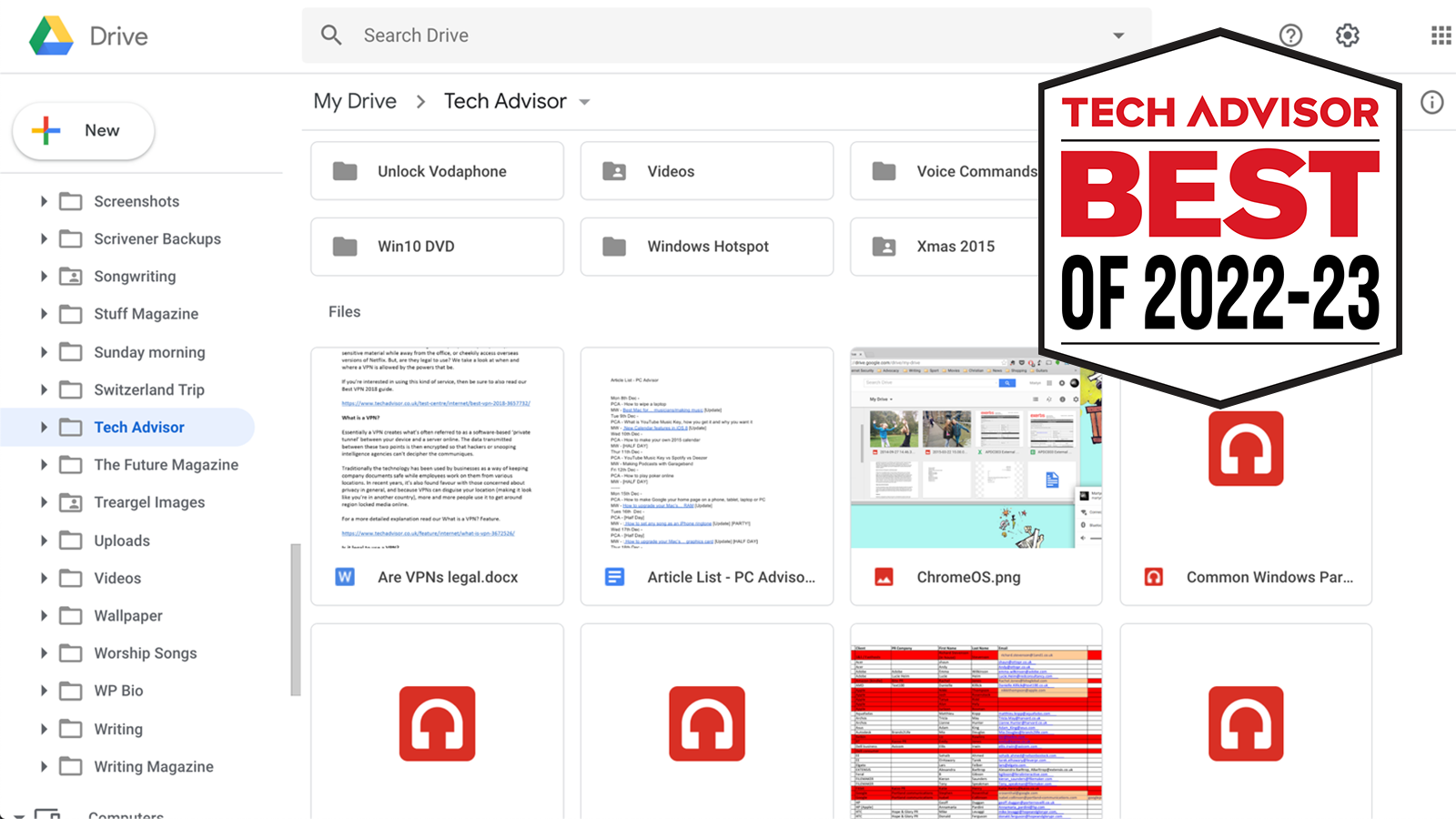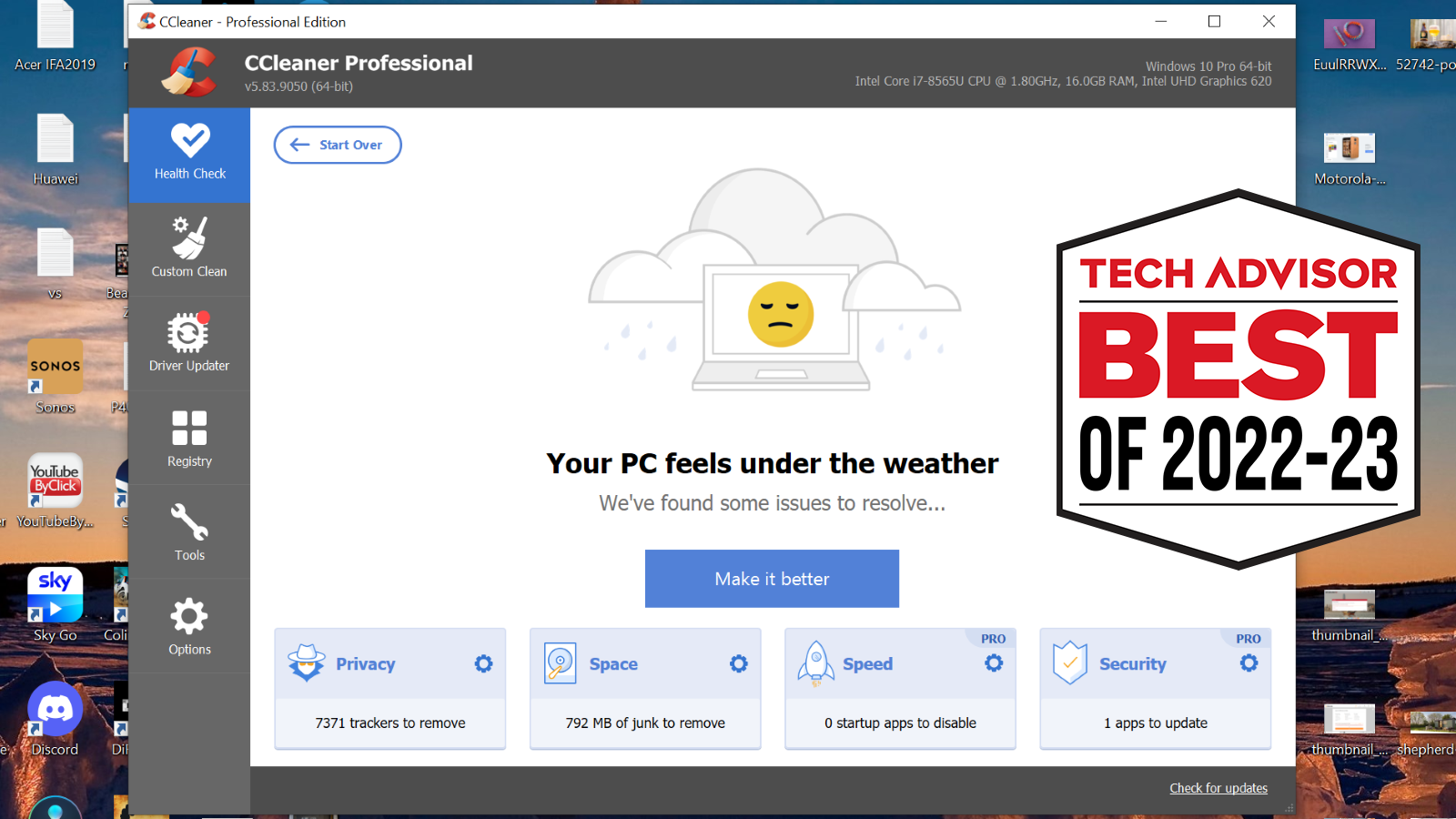In this article we draw attention to our top picks across 60 of our top product categories, from phones, laptops, tablets and wearables to smart home and lifestyle products, tech accessories and more. A handful of products here were released before 2022, but we think that even now they still represent the best of their class, making them eligible for our coveted Tech Advisor Best of 2022-23 award.
Tech Advisor Awards 2022-2023: Categories & Finalists
Smartphone Awards
Laptop Awards
Tablet Awards
Wearable Awards
Audiovisual Awards
Smart Home Awards
Lifestyle Tech Awards
Tech Accessory Awards
Software Awards
The design is distinctly different from the other entries in the Galaxy S22 range (which is to say very ‘Note-like’) and features an integrated S Pen stylus that expands functionality beyond most rivals, especially in terms of productivity.
Despite familiar-looking camera hardware, the upgrades made by Samsung render it one of the best systems in any phone right now; with a 108Mp main shooter backed up by an ultrawide and two telephoto lenses at different zoom levels – with the zoom performance particularly improved on previous models.
The expansive 6.8in LTPO AMOLED display delivers both high WQHD+ resolution and an adaptive refresh rate up to 120Hz, while long-term software support that surpasses even Google’s Pixels rounds out an impressive list of pros. If you can handle its huge size, it’s a real winner, with five years of software support the best in Android land.
The big down sides are the slow charging speeds on a phone that charges hot, the easily scratched rear plastic material, and the 60Hz display lagging behind similarly priced phones.
Yet, this is a Pixel, which means it has a superlative Android experience and camera with a software polish and premium hardware feel you won’t find on other brands in this price range.
There’s a superb always-on display, despite having an LCD rather than OLED panel, that lets you quickly view and open notifications that no other phone brand has. If the performance occasionally stutters you will be able to forgive it for how attractive the software of this phone looks.
Triple cameras on the back of the Moto G62 exist, and the 50Mp main sensor is very solid and will give you excellent daytime shots. Pair that with great battery life from the 5000mAh cell that we sometimes found reached the end of the day at 50%, and you have a great cheap phone option.
At its heart is a fast 6.8in 165Hz OLED panel with an impressive 720Hz touch sample rate that beats practically every other smartphone on the market. Though you might not notice much of a difference in real-world performance, it’ll certainly satisfy the need for gamers to have the best of the best.
That’s paired with the flagship specs including Qualcomm’s Snapdragon 8 Gen 1, 12/16/18GB of RAM, 128/256GB of storage and an updated three-fan cooling system to keep things running smoothly during longer gaming sessions.
There’s also a plethora of gaming features including side-mounted touch-based shoulder triggers, advanced haptic feedback and the ability to control performance on a per-game basis, and it’s all presented in Red Magic’s ‘Game Space’ mode.
The rear-facing triple camera setup remains unchanged from the Red Magic 6S, which in itself was the same as the Red Magic 5S, but software improvements mean it fares a little better this time around.
Its 108Mp main lens captures a stunning amount of detail with superb low-light photos thanks to a sensor that can take in more light. Improvements over the already excellent S21 Ultra keep shots and video very sharp and the software processing is less aggressive than older Samsung phones, though images are more vibrant and saturated than you’ll find on Apple’s iPhone 13 range.
The ultrawide lens does a good job of capturing scenes without a fish-eye effect but the S22 Ultra’s secret weapon is its astonishing two (2!) optical zoom lens. Thanks to optical image stabilisation (OIS) on both, you can capture pin sharp 3x optical zoom images and even 10x optical, with results better than rivals thanks to Samsung’s software smarts keeping everything looking good, and a laser autofocus system rounding off the premium experience and a top of the line 40Mp selfie camera.
Almost everywhere else, the 14s is mightily impressive. 11th-gen Intel CPUs and up to 16GB of RAM means performance is excellent, provided you don’t need a device for gaming or 4K video editing.
Other highlights include a 2.5K touchscreen display, complete with 90Hz refresh rate for smooth visuals. You also get a decent port selection, solid battery life and one of the best keyboards you’ll find in any laptop. There’s even a 90W fast charger included in the box.
It’s worth noting that there is now a new version of the MateBook 14s, but aside from new Intel CPUs it’s essentially the same device.
Things like a dim screen are inevitable and not everyone will like the quirky design on the lid. We also found the NumberPad in the trackpad a tad annoying – but Asus has got a lot right here.
The E410 has excellent battery life, a lightweight design and performance is good enough for basic day-to-day tasks. Ticking key boxes at this price makes it a great-value laptop.
An AMD Ryzen 7 CPU from the latest 6000 Series is combined with a powerful Nvidia RTX 3060 GPU to deliver excellent gaming performance. The 15.6in, 1440p display is another highlight, complete with a 165Hz refresh rate.
You’ll also get a decent keyboard, a solid range of ports and even decent battery life when you’re not gaming.
The 360-degree hinge allows for a versatile design, and things run very nicely on the 10th-gen Core processor we tested with 128GB storage.
It’s a powerful combination, which puts the device on top of the pile for those who want a Premium ChromeOS laptop that doesn’t cost the Earth.
With that in mind, allow us to introduce you to the LG Gram 17. It represents the pinnacle of laptop design, offering a huge 17in (2560×1600) display within a chassis that’s just 17.8mm thick and 1.35kg in weight.
It’s powered by Intel’s 11th-gen processors, alongside up to 16GB of RAM and a bumper 1TB SSD on high-end models. If that’s not enough, you also get stellar battery life from the 80Wh cell.
The below-par trackpad and speakers – our two biggest complaints about the 2020 model – have also both been addressed by LG, making this the best big-screened laptop you can buy.
Of course, having an excellent 14in display helps, complete with a 90Hz refresh rate. Huawei has maintained slim bezels but managed to move the webcam back above the display, even if it’s still only 720p.
Other highlights include all-day battery, an excellent keyboard and plenty of ports, something that’s often lacking on modern laptops.
There is now a 2022 version, but aside from new Intel CPUs, nothing has changed.
This includes a more modern design, with slimmer bezels allowing for a larger 13in screen within almost the same footprint. The display has always been a strength of the Surface Pro line, but adding a 120Hz refresh rate takes it to the next level.
Microsoft has also upgraded both the front and rear cameras, with the former one part of an excellent video-calling setup. Dual studio mics and impressive quad speakers complete the set.
You also get improved battery life and the customary processor upgrade (now from Intel’s 12th-gen), although it’d have been nice to see more ports.
But it’s the keyboard cover that transforms the Surface Pro 8 into a 2-in-1. The latest iteration is the most convincing yet, bundling a new-and-improved Slim Pen 2 stylus in the cost.
The main upgrades come in the form of a move to Apple’s M1 chipset, there’s a new 12Mp front-facing camera with the company’s face-tracking Centre Stage tech for use in video calls and the cellular variant now supports 5G speeds.
Beyond that, it offers up the same premium design in an array of colours, Touch ID and compatibility with Apple’s Magic Keyboard and second-generation Apple Pencil. All Apple’s really done is given its best tablet an even longer lifespan.
The tablet boasts a thin design that’s fronted by a gorgeous 2.5K 120Hz display and comes backed up by great stereo speakers and solid performance to boot.
Just as with its phones, Xiaomi’s tablet-optimised take on its MIUI user experience won’t suit everyone, but it’s wholly usable, and while the added connectivity found on the Chinese models doesn’t make it to most markets internationally, there’s still little else on the Android side of the fence we’d recommend around the Pad 5’s asking price.
Of course, something’s gotta give at the budget end and with the A8, that’s both the screen and internal storage. The display is a rather basic 8in TFT LCD panel that, while sufficiently sharp, isn’t particularly vibrant or colour-accurate. The entry-level 32GB of internal storage will likely leave some wanting more – and without a microSD slot, that simply isn’t possible. You can opt for a 64- or 128GB model at checkout though, something we’d recommend for longevity.
Still, it’s a great all-rounder that can already be found well below RRP.
The Mini’s 60Hz display has jumped to 8.3in, but without changing the physical size of the tablet – allowing for more display real estate without affecting the Mini’s portable nature. It’s a gorgeous display too, with the highest pixel density of any iPad, even if it is a bit on the small side for true split-screen multitasking.
It’s powered by the same A15 Bionic silicon as the iPhone 13 range, with plenty of power for all you might want to do on the tablet.
The Touch ID sensor has been moved to the Power button – like with the iPad Air – and there’s support for the second-gen Apple Pencil to boot. However, the lack of a Smart Connector on the rear means that it doesn’t have its own Magic Keyboard; a real boon for the iPad Air and Pro ranges, and the only real chink in the Mini’s armour.
Another difference is that it has stereo speakers and a USB-C port for charging. Alexa is built in and she’s hands-free even if the tablet is asleep with the screen off.
Of course, that’s not something a child will care about, but it means the tablet could do double duty if you were also thinking of buying an Echo Show.
This comes at a slightly higher price than the last generation, but it is justified. The Paperwhite won’t disappoint should you have enough budget to afford one.
The only two real additions from the previous generation are a temperature sensor for cycle tracking (which most rivals already offered) and built-in car crash detection borrowed from the iPhone.
That makes this a dull update for Series 7 owners, but still an excellent option for anyone with an older Apple Watch, or any iPhone owners looking to try a smartwatch for the first time. The design is slick and simple, display quality is excellent, and together with an iPhone this offers a fantastic array of features together with a smooth software experience.
Battery life remains the biggest weak spot – unlike most rivals this still needs a daily charge, and you’ll need to plan that well if you want to make the most of the sleep-tracking features.
The large always-on display is a particularly nice addition, helping showcase the vivid watch faces on offer, while making it easier to read text at a glance, though the always-on tech comes at a heavy cost to overall battery life.
Fitness tracking includes all-day SpO2 monitoring, new workout metrics (including VO2 Max), and the ability to track more workouts than ever before.
The lack of built-in GPS may irk fitness fanatics, but this is a great little inexpensive tracker for keeping an eye on your general health and fitness.
However, the price can largely be put down to inflation and if the non-folding design doesn’t bother you then these headphones are essentially flawless starting with the kinds of high-end sound and noise cancelling you’d expect from Sony, despite smaller drivers.
Elsewhere, the improved headband allows smooth adjustment and there’s an unrivalled selection of smart features from Adaptive Sound Control to Speak-to-Chat. It’s a small step forward but they remain the best over-ear headphones you can buy.
Coming in at a very affordable price, not having ANC would be understandable. It’s not just there but very good indeed, even if the Ambient mode is fairly average.
The earbuds get a lot else right too, with a comfortable fit, useful touch controls, solid battery life and decent sound quality.
Along with solid battery life and quick charging, they offer the best active noise cancelling on a pair of earbuds we’ve tested. Not only does it do a great job of removing unwanted sound, it has unrivalled AI technology that can change the mode and level depending on where you are or what you’re doing.
There’s plenty more tech packed in, too, with Speak-to-Chat, DSEE Extreme upscaling, LDAC support for Hi-Res Audio Wireless, as well as 360 Reality Audio spatial audio. And pretty much everything can be customised or switched off when needed.
It comes in a huge range of sizes and although the larger options get expensive, most won’t need to go that big. Everything 55in and above comes with new Brightness Boosting tech powered by the latest Alpha 9 Gen 5 processor.
The result is a dazzling experience and webOS has just about every streaming service under the sun that’s super easy to use with the new Magic Remote. With 120Hz support via HDMI 2.1 alongside a Game Optimizer, makes it great for next-gen consoles, too.
There’s lots to like here aside from the price. The image is crisp and vibrant from a UHD source, and there’s decent sound quality, too.
Low input lag makes it good for consoles, but it’s the Roku platform with its user-friendly interface and almost endless streaming options that is the star of the show here.
But the real selling point of the Bespoke is the fact that you won’t need to find a dark corner to store it. The completely redesigned dock is slim and attractive, and it not only charges the cleaner but will empty it via suction as well.
We do, however, have to take issue with Samsung’s definition of Bespoke: in the UK, you can’t just choose the colour option you’d like from Woody Green, Midnight Blue and Misty White – each of the three colour options is a different model with a different price point and accessories.
The X1 OMNI not only empties itself, but if you’re using the mopping function, it’ll empty and refill its water tank, clean and dry itself.
It has powerful suction (a whopping 5000PA), a clever mapping system that allows you to target specific rooms, or even pieces of furniture within those rooms, for cleaning. And you can even do it via voice commands, thanks to the integral voice assistant. It has a 4 hour 20 minute running time and there’s an onboard camera that you can access remotely.
But all that tech has to go somewhere and what this means is a huge dock. The dock is also noisy when it comes to emptying and cleaning the robot vac.
You can, of course, adjust strength and water volume to get your perfect cup and save your settings.
There are some nice design features as well, like the water tank that pulls out from the front, so you don’t have to scrabble around at the back of the appliance. You’ll also get alerts when it’s time to refill the tank and empty the integral grounds container.
The Dinamica Plus also has smart features, which allow you to check the machine’s status, adjust settings, save personalised drinks settings and – importantly – make yourself a latte, cappuccino or espresso remotely, with a single tap.
But everyone else will enjoy the consistency of the coffee it brews, as well as the pleasure of using a well-made appliance.
The built-in steam wand has one-button operation – although you’ll still have to froth the milk in the jug by hand.
It comes with a beautiful set of accessories: a stainless-steel milk jug, solid metal tamper and coffee scoop, as well as two single and two double wall baskets (the latter is to help beginners brew consistent, drinkable espresso).
The pluses and minuses of this machine really amount to the same thing: it is fully automatic. A barcode reader inside analyses the capsule and automatically pre-wets, infuses and dispenses the correct volume. You can stop the flow or add more water, but there are generally no settings to fiddle with to tailor coffee, which will frustrate some. For others, the hassle-free, hands-off automation is exactly what they want.
It dispense coffee lengths from espresso to carafe, but it’s all dependent on which pods you use.
The Vertuo Next has smart features as well, but these are really focused on ordering and recycling capsules, rather than remote operation or adjusting settings, so they will be of more use to busy people who want to automate their deliveries, or get reminders when they’re running low on capsules.
There are six programmes to choose from: air fry, bake, grill, dehydrate, reheat and roast. But there are no presets, so there’s no guidance as to the time and temperature you should use when cooking. This won’t be a problem for people accustomed to air fryer cooking, but novices might have to do a bit of online research and be prepared to experiment at first.
There are some excellent features to recommend it over rival products: there’s a window to allow you to see how your cooking is getting on without opening the door, and the OdourErase technology really works. But if you’re buying specifically for these features, make sure you get the right model as Instant makes a number of similar models, with none, one, or both of them.
Switch it on and the control panel illuminates: it’s a series of function icons around a central dial. Just turn it to the setting of your choice and press. There are five preset programmes: clean, ice, cocktails, smoothies, and pulse. You can blend either hot or cold ingredients, although you can only blend a litre of hot liquid.
The Zwilling Efinigy table blender’s dedicated ice crushing setting can be used without liquid, so you can crush 150g of ice or frozen berries at once.
There’s a neat safety feature as well: you can’t run the blender without having the lid securely fixed on, so there’s no danger of getting a surprise kitchen redecoration if you forget the lid.
Plus, if you’re after inspiration, you can download the free Zwilling app, which has a database of recipe ideas.
It features Humidity Zone and Dry Zone drawers, which we found made a noticeable difference to the freshness and longevity of food in our tests. It also has Haier’s Anti-Bacterial Treatment – a UV light designed to kill bacteria inside the fridge, for more hygienic food storage.
Beneath the fridge is an easy-to-view, 140-litre no-frost freezer.
Okay, there’s no ice maker but, apart from that, this Haier Cube has everything you could want in a luxury fridge-freezer, at a very reasonable price point.
The first layer is a pre-filter for hair and dust mites. The second layer is a HEPA H13 filter for airborne particles such as dust, pollen, mould spores and bacteria. The third layer is activated carbon for smells and harmful gases, such as tobacco smoke and formaldehyde. To top this all off, there’s UV sterilisation to kill bacteria and viruses in the appliance.
Jya states that the Fjord will deal with zones from 31m2 to 54m2. Its Clean Air Delivery rate (CADR) is 450m3 an hour, and for the TVOC CADR, 150m3 an hour.
It has a touchscreen control panel, with a display that’ll show you the air quality in terms of either PM2.5, PM10, or TVOC.
It also has smart features. It’s Apple Homekit, Google Assistant and Alexa compatible. Also, via the app, you can monitor your air quality in the longer-term, with daily, weekly and monthly graphs.
There are four operation modes, including a whisper quiet (18.8dB(A)) sleep mode.
Its minimalist design is complemented by a a subtle touchscreen display but, to make the most of the heater, you’ll want to set up its Wi-Fi smart features, which will allow you to schedule and operate it remotely on your phone (although you should be very careful whenever turning on a heater remotely). You can also switch it on and off using voice commands via your home assistant.
This means you can make a cold bedroom cosy before you head up or get an office warm enough for the day ahead – without wasting any heat when you’re not using it.
It has all the same features as the pricier Hive Thermostat – plus, it can control up to six heating zones, compared to the previous iteration’s three. But the big change is that most of the controls have been shifted away from the minimalist, touchscreen thermostat to the app.
You’ll use the app to set up scheduling for your hot water and heating, switch on frost protection and holiday mode, turn on geolocation (so you’ll get an alert if you leave home without switching off your heating) and boost your heating and hot water.
There’s the option to add to your set-up with Hive thermostatic radiator valves for granular room-by-room heating control, and the Thermostat Mini is compatible with with Alexa, Google Assistant, Apple HomeKit, Siri Shortcuts and IFTTT.
It offers great control over motion detection so you get only the notifications you care about. Better still, it comes with an indoor module called the HomeBase that acts like a range extender and means you don’t need a strong Wi-Fi signal at your door as with most other smart doorbells.
The HomeBase has 16GB of built-in storage for recording video, meaning there’s no need to pay a subscription as you do with Ring, Google and other doorbells that offer no local recording option.
Video quality is impressive both day and night, and you have a choice of using the built-in battery to power the unit or using a transformer for continuous mains power. If you want the simplicity of battery power, just note the whole doorbell must be removed from its mounting bracket to be recharged: you can’t buy spare batteries and swap them over.
But for a less wallet-beating price, you’ll still get the top-notch iO cleaning performance, as well as genuinely good brushing guidance from the accompanying app.
One note on the price: there are regular deals on this brush, so if you bide your time, you should be able to avoid paying the full RRP.
With three stubble combs by default and the option for a dedicated body blade, this one razor can cover clean shaving, stylish stubble, or body grooming, all in an unbelievably portable form factor. It’s lightweight, powerful, and gives a great shave even on tricky areas like the jawline.
All that and it’s also one of the most affordable electric razors on the market. Although you’ll have to swap blades once every few months, at almost £10/$10 a pop, that still leaves it cheaper than most shaving solutions.
The idea behind it is to use the heat from light, rather than heated coils, to dry hair. Zuvi claims this will stop the inside of the hair shaft from drying out and thus reduce damage.
What we can say is that it dries hair extremely quickly, at a much lower temperature than a standard hairdryer. It’s quieter as well, which makes the whole hairdrying experience much more relaxing, and hair is left soft and shiny.
Best of all, it’s extremely energy efficient, using much less power than rivals.
The Withings Body Cardio does pretty much everything a smart scale can. It syncs with Withings’ range of activity trackers for all-round fitness monitoring.
The Body Cardio is our favourite smart scale for the sheer number of stats and handy info like how much weight you’ve lost or gained since your last weigh-in. It’s pricier than the others but offers just about everything you might possibly need.
Now, it also offers a vascular age metric, which could help you monitor your heart health.
Both are worth having so you can prove where the video is recorded and to remove reflections from the windscreen in the video.
The front camera is well designed if you’re after something that will hide out of the way behind your rear-view mirror, but the rear camera, although small, has a very thick cable which can be hard to hide away neatly.
The automatic gears, powerful motor and good range make it a joy to ride. There are lots of useful extras including a built-in lock, alarm and tracking system, and you get LED lights and mudguards as standard – plus a generous three-year warranty.
Do note that if you’re under 170cm (5ft7), buy the X3 instead as the S3 is a surprisingly large bike.
Just how long-range are we talking? With a combined 36V 15Ah battery capacity, the Turboant V8 can last up to 50 miles on a single charge. Combine that with a 450W motor that provides rapid acceleration and impressive top speeds and you’ve got the ideal scooter for short and medium-distance travel.
The batteries and motor mean it’s quite heavy at 21.6kg, and less than ideal if you want to hop onto a train or bus, but at least the single-latch folding mechanism allows you to fold the scooter in as little as three seconds – it really is one of the simplest systems we’ve seen.
It starts with a stylish design with a very versatile stand meaning you can adjust the monitor into a wide range of positions easily. Build quality is very good, too.
Add in a high-quality 24in IPS display and you’ve got a nicely balanced monitor for your home office. The highlight here is the USB-C connectivity and built-in docking station meaning you can quickly connect or disconnect a laptop with minimal hassle.
This is a great value all-in-one printer that’s easy to set up and use. It’s also no slouch with lots of features and versatile printing including documents and photos. Cheaper printers can be expensive to run, but the TS7450 doesn’t even fall into this category.
The mobile apps are a little frustrating at times but print quality is good, although you’ll want to stick to proper glossy paper for photos. Note that the TS7451 is the same printer, only in white.
Printing is slightly slower than most rivals at around 50 seconds, but this is due to it being a dye-sublimation printer, which means that the print ejects in and out at least four times to add each layer of colour, plus a protective film.
The wait is worth it, as print quality is overall extremely high and more detailed, vivid, and striking than you would get from a quicker digital instant printer.
The accompanying app is simple and user-friendly, with options to customise photos with frames, filters, aspect ratio changes, text, and stickers – but few unnecessary frills to over-complicate things.
It also syncs with any image folders on your phone, plus images from WhatsApp, Instagram, Facebook, Twitter, and more.
The auto-exposure dial makes low light photography reasonably visible, and the design is slimmer and more refined than its predecessor overall. There aren’t any manual adjustments that users can make to the camera, but at this price point that’s to be expected.
The Mini 11 prints on Instax’s Mini film – which produces pocket-sized polaroid-style photos. This instant camera is a compelling option for younger audiences with not much photography experience.
You can add an unlimited number of pictures and there are no subscription or storage fees. You can also invite friends or family members to send photos directly to your frame, in a simple and nearly instantaneous process. There’s unfortunately no option to automatically sync with social media accounts.
The Carver is a landscape format frame and portrait pictures will be displayed either centred with a black bar on either side, or ‘intelligently paired’ via an algorithm. The latter can be a bit hit and miss but it throws up some interesting combinations.
There’s even a special warranty with three years of data recovery should the drive fail – something that’s normally reserved for enterprise-class devices.
It’s a great choice for PC and console owners who want the best-in-class PCIe 4.0 drive.
The extra processor power and memory speed things up nicely making this the perfect device to sync files from multiple computers and distribute media around the home.
Those looking for extra bays and power should look at the DS4 range.
It’s a dual-band Wi-Fi 5 system, but technically it’s tri-band because it can use Powerline for ‘backhaul’, which means the mesh units can talk to each other even if they’re further apart than Wi-Fi allows.
While it was originally available only in a set of three offering up to 6000 square feet of coverage, TP-Link has since launched a two-unit set ideal for smaller homes.
If you want a mesh Wi-Fi system that doesn’t depend on Wi-Fi for the units to communicate with each other, the Deco P9 is ideal.
This is an excellent choice if you want to boost the speeds of multiple network devices (such as smart TV, games console, Sky/Tivo box, laptop, etc) with a fast, stable wired connection. Other Powerline adapters have just one or two Ethernet ports, to which you could add an Ethernet Switch for extra wired ports, but this is a much neater solution.
Handily both adapters feature passthrough sockets to save you from losing one at the wall socket when the adapters are plugged in.
This top-end value-for-money AV1300 Powerline Starter Kit includes the ability to add a new, fast Wi-Fi hotspot in the second room, which is a great help if your home Wi-Fi signal gets weaker the further you are away from the room that your router is set up in. This should significantly increase wireless speeds for your smartphones, laptops, tablets and other devices.
The Ethernet ports are at the top of the adapter, which is handy if your power sockets are close to the floor line.
All the USB (5 x USB-A, 3 x USB-C) and Thunderbolt ports (3 x TB4) are super-fast and offer impressive device charging – at the front, there’s a USB-C port with 20W power.
CalDigit has sacrificed one of the Thunderbolt 4 ports for a dedicated DisplayPort, which is fine if you need that video port but not as flexible as leaving three downstream Thunderbolt 4 ports with which you can add adapters for external displays.
Windows users with a Thunderbolt 4 or USB 4 computer can connect a single 8K display at 60Hz; Mac users, a single 6K display at 60Hz. Older Intel Macs and newer M1 Pro and M1 Max MacBooks can connect two 4K displays at 60Hz, although plain M1 MacBooks are sadly limited to just the one external display.
Wired internet is 2.5 times faster than on any other dock or hub we’ve tested, if you have 2.5GbE (or above) compatible devices. The 230W power supply is also the most powerful of any dock we’ve tested, and the dock can charge a laptop at 98W.
The Caldigit TS4 has the most ports at the fastest speeds and the greatest power, making it our number-one choice if you want the very best.
The PowerExpand Elite can connect up to three external displays on Windows laptops only as macOS doesn’t support MST (Multi-Stream Transport).
The HDMI and Thunderbolt/USB-C port would connect two displays (4K at 60Hz for Thunderbolt laptops), while the third external display would use one of the USB-C ports (4K at 30Hz). Unless your display has a USB-C connection itself, you’ll need an adapter (not included) using the Thunderbolt and USB-C connections.
One seemingly minor feature that we love is the easy-to-reach on-off switch, which will help save energy, prolong your device’s battery, and stop the dock getting too warm when left unused overnight.
Both USB-C ports are Gen. 2 at 10Gbps, where some docks boast just 5Gbps C-type ports.
You can use the HDMI 1.4 port to output to a 4K (at 30Hz) or Full HD 1080p monitor or projector.
Passthrough charging is especially handy if your laptop or USB-C device has just one USB-C port. The 87W power is more than you get from most hubs.
At 88g, it’s lightweight, and, as with many hubs, features a short integrated cable so works well as a portable travel device.
There are a generous three USB-A ports that can also provide 7.5W power passthrough to charge other devices.
Available for Windows, Mac, iOS and Android, some of the highlights include top-notch antivirus performance, phishing protection, and warnings of dangerous websites, a no-limits VPN service and a password manager, plus cloud backup storage and performance tools to help speed up your computer.
The core malware protection is superb. In AV-Test’s most recent report, Norton 360 scored top marks for protection, performance and usability.
The price of this protection is £29.99 for the first year, which is £5.99 per device). As with almost all antivirus software, that’s a discounted rate for the first year: upon renewal it will cost you £89.99 (£18 per device), which is a little higher than some of its rivals.
In the US Norton 360 Deluxe costs $49.99 for the first year ($9.99 per device) and $104.99 thereafter.
Based in Panama and with an audited no-logs policy, Nord is a good choice for many reasons. Thanks to NordLynx (a WireGuard-based protocol), it’s the fastest VPN around and and offers a good range of features, including a kill switch on its Android, Windows, iPhone and macOS apps.
NordVPN is ultra-reliable and is also very good at unblocking streaming services, including Netflix and Disney+.
The two-year subscription is the best value and there’s a money-back guarantee in case you’re not totally happy, too. NordVPN now offers three tiers: Standard, Plus and Complete. Plus adds Nord’s Password Manager and Data Breach Scanner, while Complete also comes with 1TB of encrypted cloud storage.
Drive’s interface is simple, clean, and takes about two minutes to master. That’s not to say it’s basic, as Drive has useful features such as sharing links to folders (while setting the level of control the recipient has), accessing a file even if it’s opened on another device, plus apps for PC, Mac, iOS, and Android.
One of the real benefits is that Drive works seamlessly with Google’s free suite of office apps which you can use in a web browser or via apps on your phone and tablet.
The best part is that Google One can be shared by up to five family members.
Google Drive is an excellent, reliable, and affordable cloud storage service.
It managed to clean more total space from our test laptop than any other PC cleaner, so performance is top-notch. We’d just like a little more control over what is deleted.
The interface is perhaps a little dated and can take time to learn, but it’s serviceable and there are plenty of tools on offer here to get various tasks done as well as automatic cleaning and scheduling.
Marie is Editor in Chief of Tech Advisor and Macworld. A Journalism graduate from the London College of Printing, she’s worked in tech media for more than 17 years, managing our English language, French and Spanish consumer editorial teams and leading on content strategy through Foundry’s transition from print, to digital, to online - and beyond.
![]()
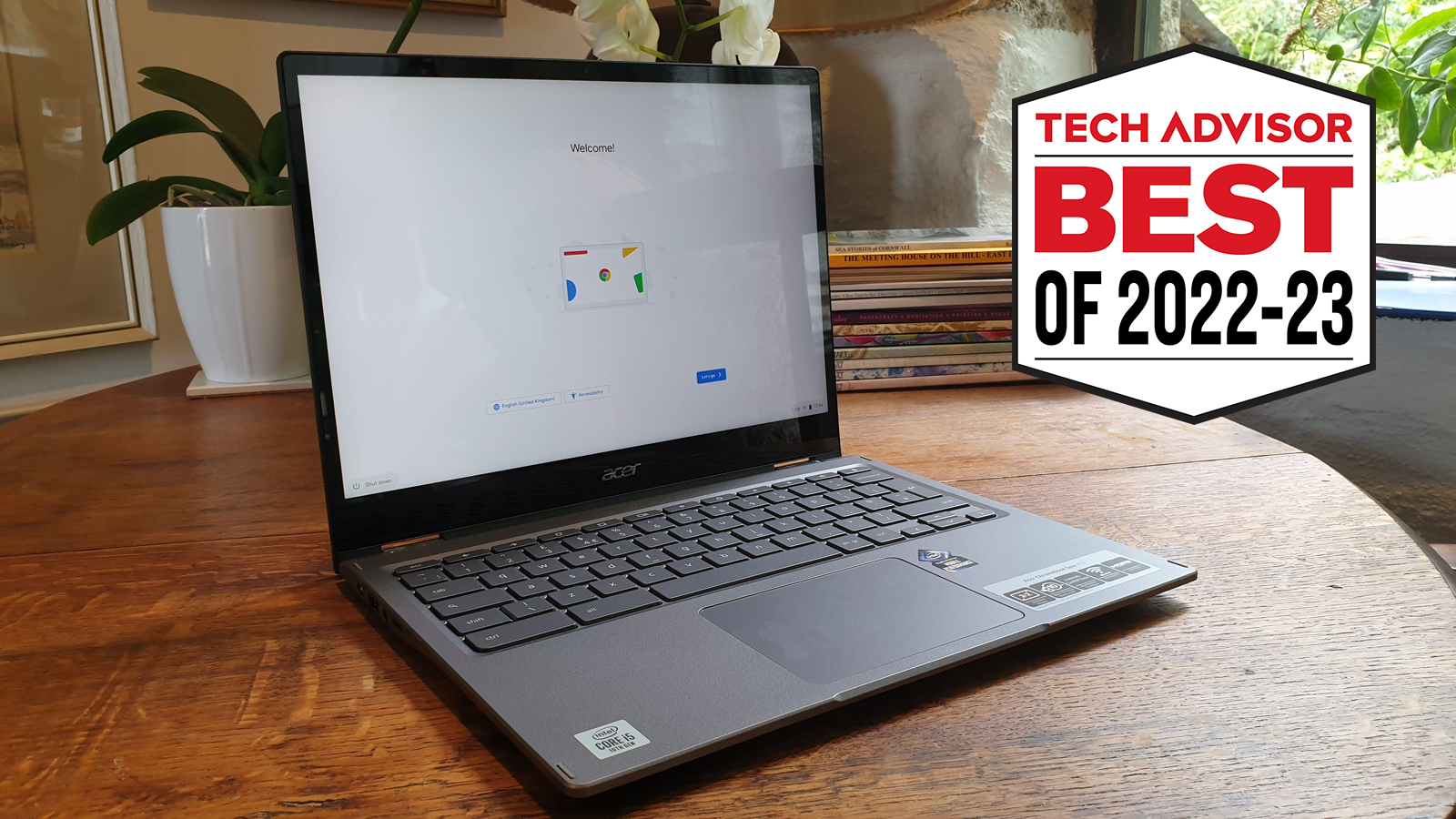
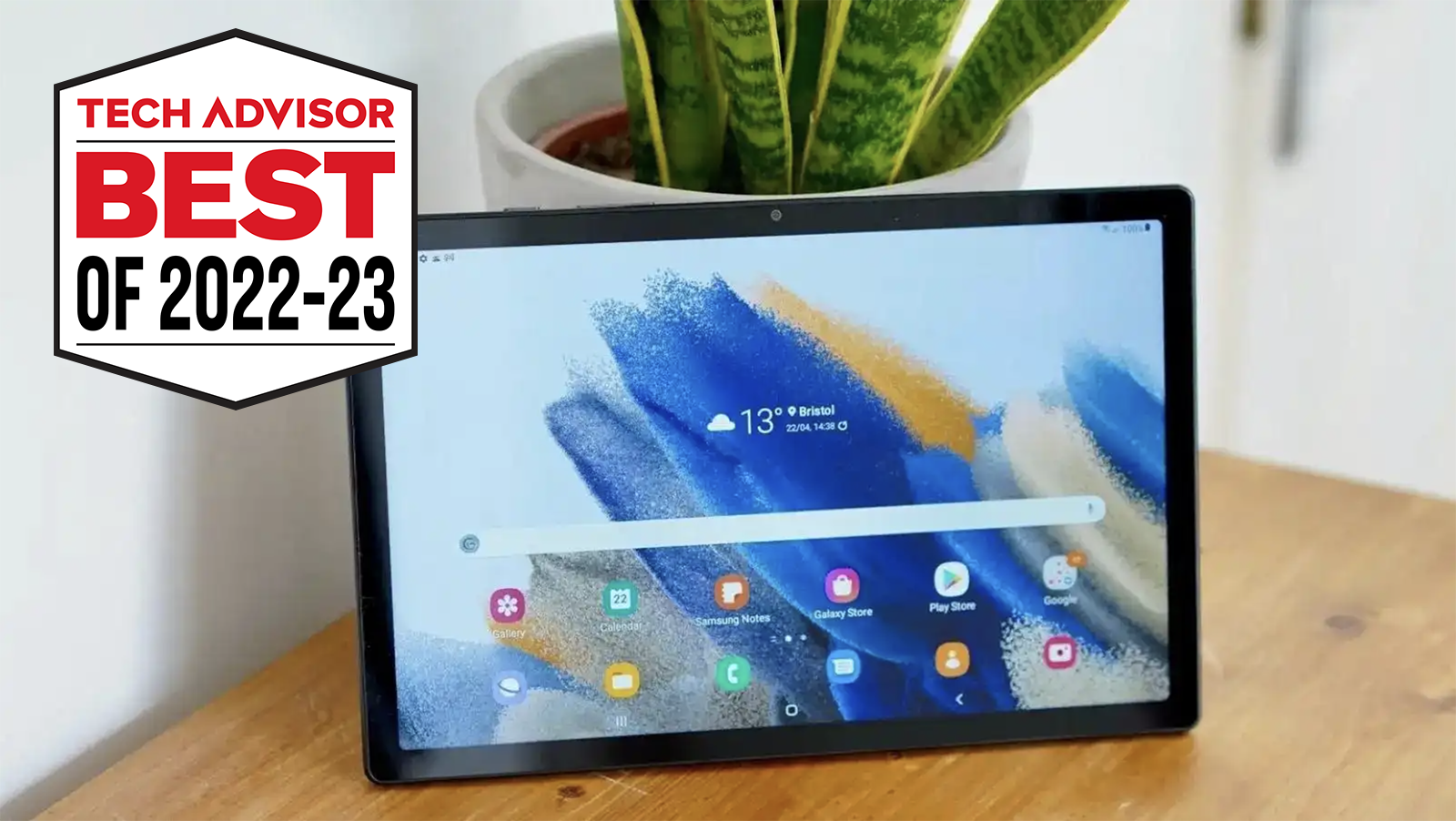

![]()


